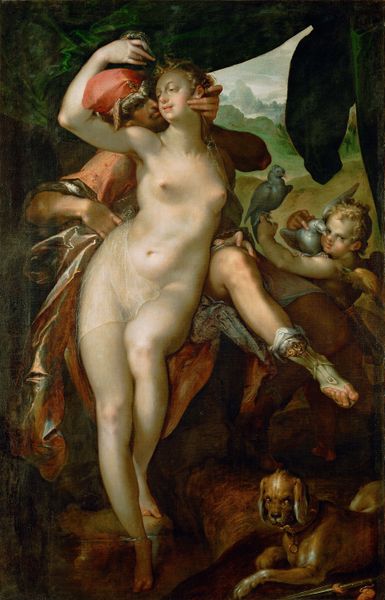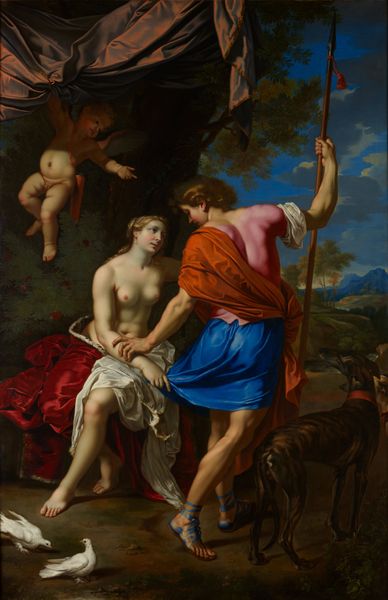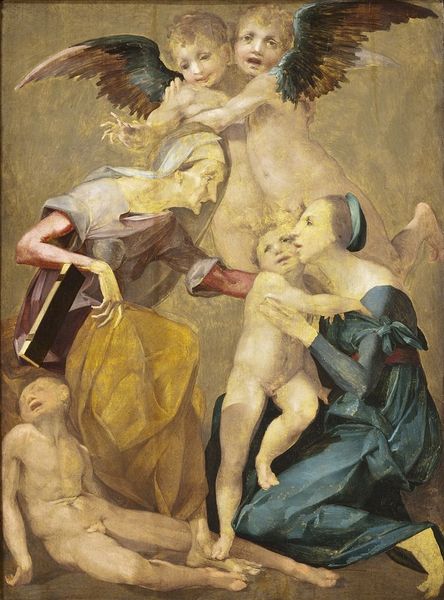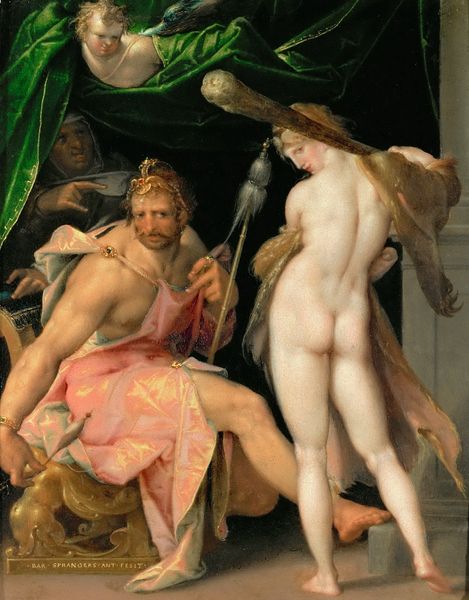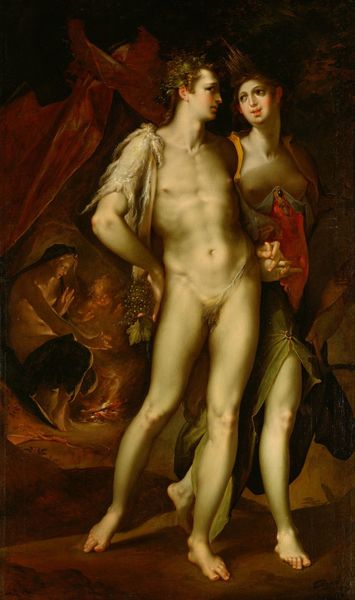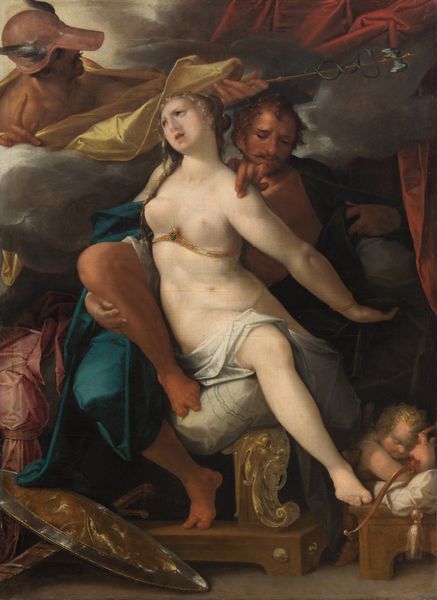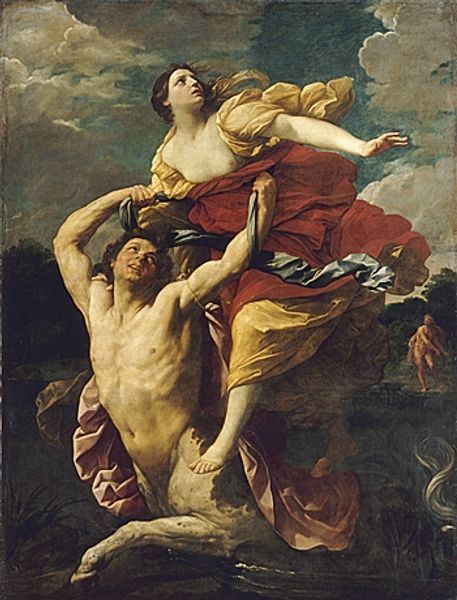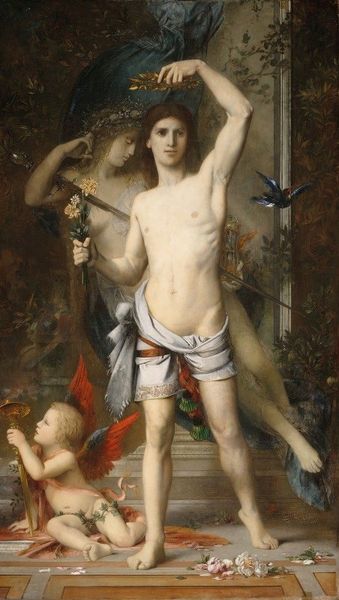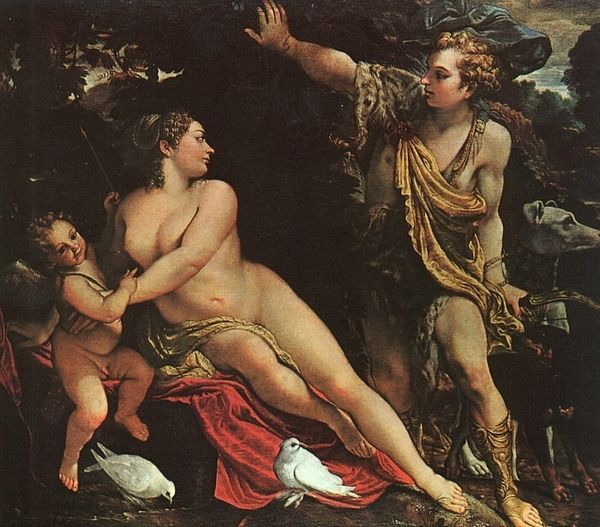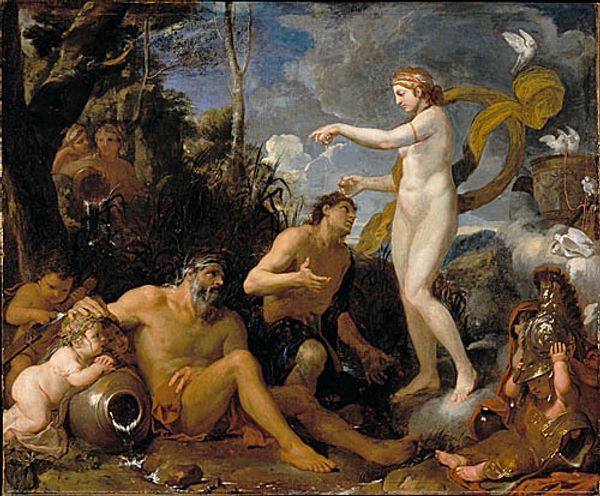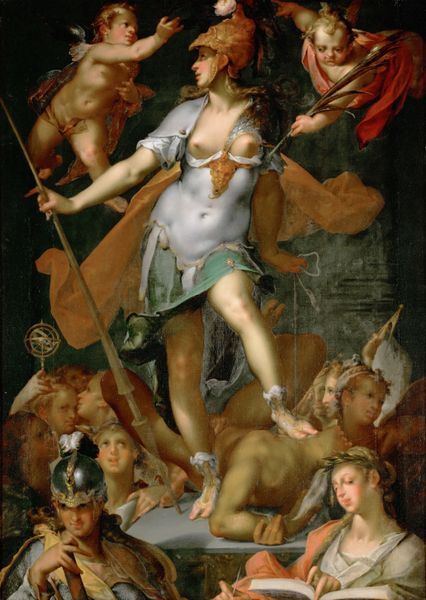
painting, oil-paint
#
allegory
#
painting
#
oil-paint
#
fictional-character
#
mannerism
#
figuration
#
mythology
#
history-painting
#
italian-renaissance
#
nude
#
portrait art
Dimensions: 210 x 174 cm
Copyright: Public domain
Curator: What immediately strikes me about Bartolomeo Passerotti's "Perseus frees Andromeda" is its overt theatricality. The figures are poised, almost like actors on a stage, bathed in dramatic light. Editor: I agree. And all this is painted on a large canvas using oil, as evidenced by the layered pigments and visible brushstrokes. You can see how the material quality enhances the musculature on both figures. Did he make any of the materials, do we know? Curator: Probably not his oil paints! What’s compelling to me is the artist's choice to depict this mythic scene—Andromeda chained, awaiting a sea monster, rescued by Perseus. It's loaded with symbolic weight, isn't it? We are reminded about justice, courage, or patriarchal control. Editor: Indeed, and the visual rhetoric really does highlight production; this picture must have been costly to produce. Curator: Note how the Renaissance Mannerist style allows Passerotti to stretch and elongate the forms, almost to the point of exaggeration. It's about conveying an emotional intensity rather than a pure, classical naturalism. Editor: Absolutely. Consider too how the rendering and labor is uneven here, with some faces almost muddy. Do we know whether Passerotti had studio assistance, especially with underpainting or mixing paints? Curator: The painting from 1575 allows us to remember an idealization of heroic masculinity—Perseus’s muscular form. In his presentation, the hero comes to be more interesting than the enslaved maiden herself. Editor: Perhaps. I see the value the patron of this painting would have extracted. It is, in itself, the product of complex negotiations over material access and visibility. It reminds us how powerful the upper classes of Italian renaissance society had become, with more access to resources than previous elites. Curator: Looking closer at the winged helmet and sword Perseus is flaunting, those objects clearly point to the hero's divine mandate. It reinforces a world that is operating at a certain order. Editor: Examining the oil’s texture, though, the visible brushwork shows evidence of Passerotti's labor, the social effort, even a human fallibility that almost offsets some of that authority. Curator: The visual narrative is undeniable: an age-old tale of triumph and the subjugation of wild nature or primal, uncontrolled femininity. Editor: For me, it speaks of class more directly than primal instinct; after all, this work and the means to realize it were only available to the richest people. Curator: Ultimately, Passerotti’s visual retelling reminds us how enduring the classical myths continue to be—and also how easily those myths could serve specific social and political agendas in any century. Editor: Yes, that tension between the myth and the tangible cost of representing it tells an even deeper story, perhaps inadvertently, of that very moment in Italian society.
Comments
No comments
Be the first to comment and join the conversation on the ultimate creative platform.
